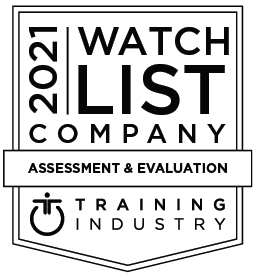Of all the topics I’m asked about in my 30-plus years of coaching speakers, dealing with anxiety is the most common.
Every 3 out of 4 people suffer from it at some point in their careers.
And, I’m sure you’ve heard the one about how people fear public speaking more than death. The truth is, in an open-response survey that asked people about their greatest fears, public speaking was mentioned more often than death.
It’s probably not the case that people would rather die than give a presentation. But speaking in front of others may be top of mind for more people, because it’s something they’re asked to do—or required to do—as part of their jobs.
Why does public speaking cause so much anxiety?
The simplest explanation is that your fight-flight response gets triggered.
It harkens back to when your ancestors needed a quick burst of life-saving adrenaline to survive critical moments when they felt threatened. It’s just that now your brain perceives having to stand up and speak in front of a large crowd the same way.
Once the critical moment arrives, your adrenaline flows and, voila, you feel nervous. Not fun! And, not the thing you want to have happen when you’re in an important situation.
There are a number of different ways you can deal with speaking anxiety.
Some things you can do before your presentation and some during. Today, I want to focus on anxiety-reducing techniques you can use before your presentation.
Meditate.
Meditation works well for some people. If you’ve meditated before and find it useful as a relaxation or stress reduction tool, by all means do it!
There’s scientific evidence that meditation helps to regulate your heart rate, reduce blood pressure, improve cognitive function, and reduce your stress response.
For example, specific parts of the brain get activated during stressful events. Over time, those parts grow dense in response to stress. But the brain scans of people who meditate regularly show less activity in those parts of the brain during stressful events and a reduction in density over time.
If you’ve never meditated and you’re not sure where to start, there are a ton of apps you can download that offer guided or unguided meditations of varying lengths—anywhere from 3 to 60 minutes.
You can also try deep breathing techniques anywhere at any time. Try deep abdominal breathing by taking 5 or so breaths per minute, inhaling through the nose and exhaling through the mouth, over a period of 5-10 minutes.
Visualize it.
Try positive visualization. Imagine standing up to deliver your presentation, starting off well, connecting with the audience, and moving through the presentation with confidence.
Do this visualization a few times a day for at least one week prior to the actual event.
Research shows people who visualized giving an effective presentation reported lower levels of anxiety than those who didn’t use visualization.
Exercise.
Some people find it relaxing to take a walk before delivering a presentation. If that isn’t practical, do some form of exercise—yoga, stretching, or anything that gets your body moving in a low-impact way—and do it as close to presentation time as makes sense for you.
Have a plan.
Get your material well organized! A tool like the Mandel Blueprint® is ideal for helping organize your thoughts.
It’s important to make the sequence of information you present comfortable and logical for you and, at the same time, rooted in the issues your audience cares about most.
Practice, practice, practice—never memorize!
Deliver your presentation idea-for-idea, not word-for-word. Trying to recite a script is nerve-wracking and will sound unnatural, even phony.
Practice standing up as you would during your actual presentation. Get the sequence of ideas right, pause, and glance at your slides if you need to. The most important thing is to practice your presentation enough so that you can conversationally “talk it” to your audience, not recite or read it.
If you’re someone who suffers from speaking anxiety, don’t despair!
Know that you’re in good company. If you haven’t already, try the techniques above. It’s likely that one or more of these will help make speaking in front of others a less nerve-wracking experience for you.
And stay tuned for my next post, where I’ll offer some tips for how to deal with anxiety while you’re giving a presentation. (I’ll also talk about something you can try if none of these tips offers relief!)
Is speaking anxiety a problem for you or others on your team? Does it prevent you from delivering effective presentations? Thousands of executives, managers, and sales professionals have used our expert one-on-one coaching services to help them prepare for crucial presentations and speaking engagements. Learn more about Mandel’s Presentation Coaching.
StatisticBrain.com
Ibid
Huffington Post: The Health Benefits of Meditation.
Visualization: A means of reducing speech anxiety. Joe Ayres and Theodore S. Hopf. Communication Education Vol. 34 , Iss. 4.










